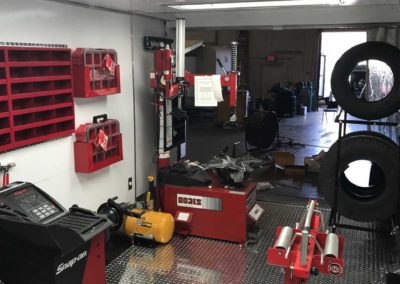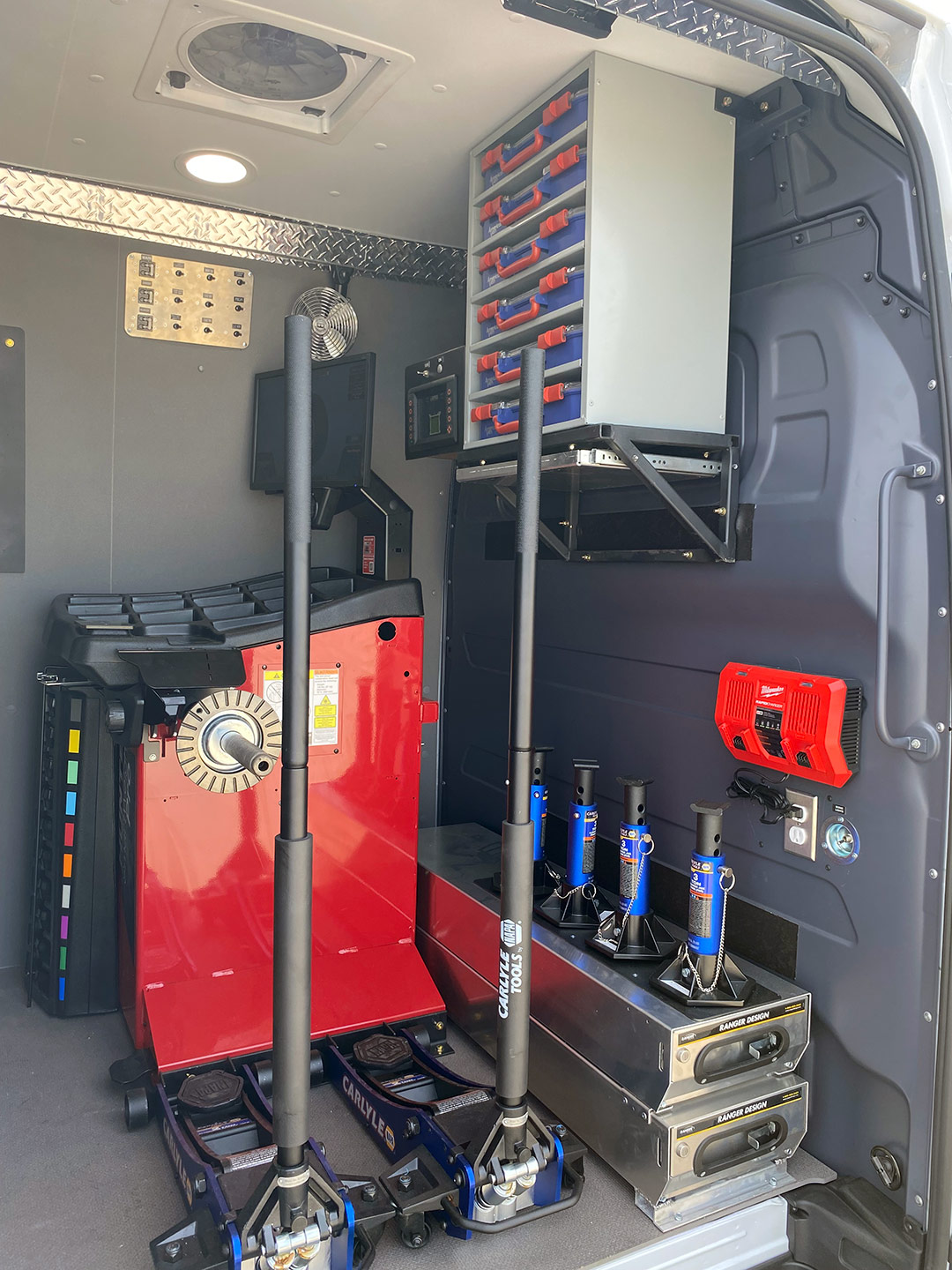Tire Solution: Proven Approaches for Optimal Tire Upkeep and Care
From ensuring appropriate tire pressure to routine turning and alignment, there are tested approaches that can significantly expand the lifespan of your tires and improve general driving experience. Let's dive right into the globe of tire service and discover the tricks to maintaining your tires in superior form for the long haul - Mobile Tire Service Las Vegas.
Significance of Tire Stress
Correct tire pressure is an essential element in making sure optimum lorry efficiency and safety and security on the road. Keeping the recommended tire pressure degrees provided by the producer provides many benefits. To start with, sufficient tire pressure advertises far better fuel efficiency, as under-inflated tires can cause boosted rolling resistance, causing the engine to work tougher and eat even more fuel. Appropriate tire pressure makes certain even tread wear, boosting tire durability and conserving money in the long run by postponing the demand for premature substitutes. Furthermore, effectively pumped up tires contribute to improved handling and braking capabilities, crucial for secure driving in various road problems. Over-inflated tires, on the other hand, can lead to minimized traction and a harsher experience. On the other hand, under-inflated tires are prone to getting too hot, which can cause blowouts and mishaps. Frequently examining and changing tire stress, particularly soon trips, is an easy yet reliable method to boost lorry performance, extend tire life expectancy, and prioritize safety and security when driving.
Tire Rotation Standards
When thinking about tire rotation standards, it is necessary to understand the importance of this maintenance task in optimizing tire life-span and preserving optimum vehicle performance. Tire turning entails transforming the position of each tire on a car to make sure also walk wear. Front tires often tend to put on a lot more swiftly than back tires because of steering pressures, making regular turning crucial for well balanced wear patterns. The advised turning pattern differs depending on whether a lorry is front-wheel, rear-wheel, all-wheel, or four-wheel drive. Generally, tires ought to be turned every 5,000 to 7,500 miles, or as encouraged in the lorry handbook. Overlooking tire turning can result in uneven wear, affecting handling, traction, and possibly compromising lorry safety and security. By adhering to correct turning standards, vehicle drivers can prolong the life of their tires, improve gas performance, and improve general driving experience. Normal turning is a straightforward yet efficient upkeep technique that adds significantly to tire long life and lorry efficiency.

Benefits of Wheel Placement
Guaranteeing appropriate wheel positioning after tire turning is critical for preserving well balanced wear patterns and taking full advantage of vehicle efficiency. Wheel alignment describes the change of the angles of the wheels to the supplier's specs. Among the key advantages of wheel alignment is enhanced guiding and dealing with response. When the wheels are properly lined up, it minimizes steering initiative, guaranteeing a smoother and extra regulated driving experience. Additionally, proper wheel alignment assists to prolong the life expectancy of your tires. Misaligned wheels can create uneven tire wear, causing premature tire substitute and raised maintenance prices.

Tire Tread Deepness Inspect
Carrying out a normal examination of tire tread deepness is important for keeping secure driving conditions and lengthening the lifespan of your tires. The step on your tires plays an essential function in giving grip, especially in damp or slippery problems. To inspect your tire tread deepness, you can utilize a look at these guys step deepness scale or the penny examination. The recommended walk depth goes to least 2/32 of an inch. It is time to replace your tires to make certain optimal efficiency and security on the roadway if the walk deepness is listed below this limit. Uneven walk wear can indicate concerns with tire suspension, placement, or stress, highlighting the importance of regular tread depth checks. Overlooking to keep an eye on and keep proper step depth can result in reduced hold, longer braking distances, and an increased threat of hydroplaning. By including tire walk deepness checks right into your regular upkeep routine, you can drive with self-confidence understanding that your tires remain in leading problem.
Seasonal Tire Assessment
Seasonal tire assessment is a basic aspect of tire upkeep that ensures tires are all set to deal with the challenges positioned by different climate conditions. In prep work for winter months, it is important to examine the tire stress consistently as cool temperature levels can trigger tire stress to drop. By conducting regular seasonal tire examinations, chauffeurs can extend tire life expectancy, enhance fuel performance, and most importantly, guarantee a secure driving experience in differing climate problems.
Final Thought
To conclude, keeping correct tire stress, turning tires consistently, aligning wheels correctly, keeping an eye on step depth, and carrying out seasonal assessments are crucial practices for optimum tire treatment. By complying with these verified review techniques, vehicle drivers can ensure their tires last much longer, execute far better, and add to overall vehicle security. It is very important to focus on tire maintenance to avoid accidents, boost fuel performance, and extend the life-span of tires.
Appropriate tire stress advertises better fuel efficiency, as under-inflated tires can lead to raised rolling resistance, triggering the engine to work more challenging and take in even more fuel.When considering tire turning standards, it is important to recognize the value of this maintenance task in taking full advantage of tire lifespan and maintaining optimal automobile efficiency. Seasonal tire inspection is a fundamental facet of tire maintenance that makes sure tires are prepared to encounter the obstacles positioned by different weather condition problems. By carrying out routine seasonal tire examinations, chauffeurs can extend tire life expectancy, enhance gas effectiveness, and most notably, guarantee a protected driving experience in differing climate conditions.
In final thought, preserving proper tire stress, turning tires routinely, aligning wheels correctly, monitoring tread deepness, and carrying out seasonal assessments are vital methods for optimal tire treatment.